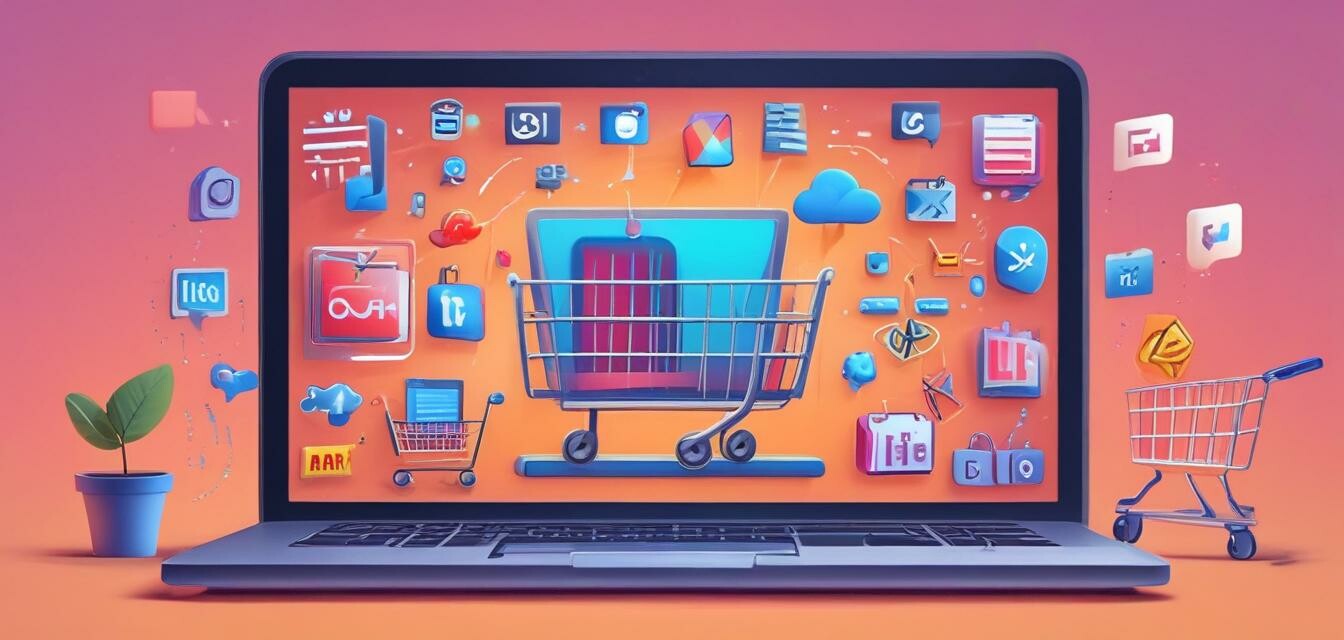
Social Media Trends Revolutionizing eCommerce
- Social commerce is becoming a significant channel for online sales.
- User-generated content enhances credibility and purchases.
- Interactive content is crucial for engaging younger consumers.
- Brands are leveraging micro-influencers for authentic marketing.
- Innovative payment methods on social platforms are reshaping shopping behavior.
The intersection of social media and eCommerce is rapidly evolving, creating new opportunities for businesses to engage consumers in innovative ways. As we look toward 2025, it’s crucial to understand the emerging trends that are shaping the eCommerce landscape. In this article, we will explore how social media trends are revolutionizing eCommerce marketing and consumer interactions.
The rise of social commerce
Social commerce is redefining the shopping experience by integrating online purchasing capabilities directly within social media platforms. With consumers spending more time on social networks, eCommerce brands are capitalizing on this engagement to drive sales. Here are key aspects to consider:
| Aspect | Description |
|---|---|
| Shopping via social media | Platforms like Instagram and Facebook allow brands to tag products in posts, streamlining the shopping process. |
| Live shopping events | Brands host live streams where they showcase products in real time, allowing for immediate purchases. |
| Shoppable ads | Targeted ads on various social platforms feature direct links to purchase, increasing conversion rates. |
User-generated content (UGC)
User-generated content is a powerful tool in building trust and authenticity among consumers. Users frequently turn to social media to share their experiences with products, influencing others' buying decisions. Let's delve into why UGC is important:
- Enhances credibility as users trust other consumers more than formal advertisements.
- Increases engagement, prompting potential buyers to learn more.
- Lowers marketing costs when brands leverage content created by users.
The impact of interactive content
Interactive content, such as polls, quizzes, and augmented reality (AR), engages consumers and elevates their online shopping experience. By fostering a sense of involvement, brands can convert casual browsers into buyers. Some examples include:
- AR try-ons, allowing consumers to visualize how a product might look on them.
- Quizzes that help users find products tailored to their preferences.
- Polls to determine what products consumers would like to see next.
Importance for younger audiences
Data suggests that younger consumers, especially Gen Z and Millennials, favor brands that engage them with interactive content. By creating memorable shopping experiences, brands can cultivate loyalty among this demographic.
The role of micro-influencers
Micro-influencers, defined as individuals with a smaller but highly engaged follower count, are proving to be more effective for eCommerce marketing. Brands are shifting their focus toward these influencers for several reasons:
Pros
- Higher engagement rates compared to macro-influencers.
- A more authentic connection with their audience.
- Cost-effective partnerships for brands.
Cons
- Limited reach compared to larger influencers.
- Less brand awareness initially.
Innovations in payment methods
As consumer preferences evolve, so do payment methods on social media platforms. Innovations like one-click buying, integrated digital wallets, and cryptocurrency options are becoming increasingly common. The implications are significant:
- Reduces friction in the purchasing process, leading to higher conversion rates.
- Enhances the consumer shopping experience, making it seamless.
- Attracts younger consumers who prefer digital currencies.
Key players in the market
Major platforms are constantly innovating their payment systems, keeping eCommerce brands on their toes. Here are some notable players:
- Facebook Pay
- Instagram Checkout
- TikTok shopping
Navigating the future
As we step into 2025, it will be crucial for eCommerce businesses to stay ahead by adopting these social media trends. By leveraging social commerce, UGC, interactive content, micro-influencers, and innovative payment methods, brands can create unique shopping experiences that convert interests into sales.
For more tips on building your online presence, check out our comprehensive eCommerce strategies section.
Conclusion
The infusion of social media trends into eCommerce presents both challenges and opportunities for businesses. By understanding and adapting to these evolving trends, eCommerce brands can enhance consumer engagement, increase sales, and establish a strong digital presence. Stay tuned to our blog to keep up with the latest news and trends in the eCommerce industry!
